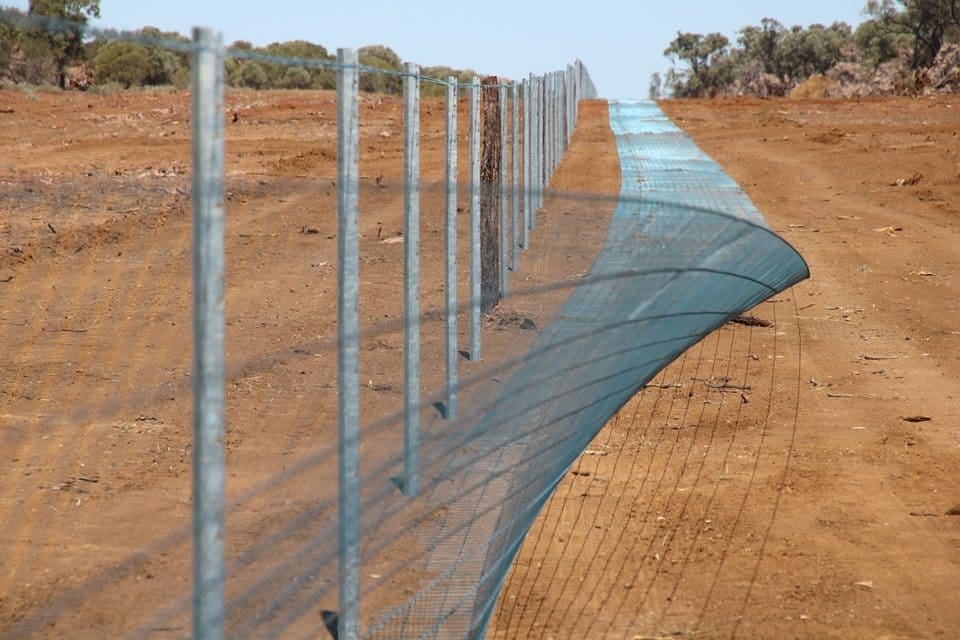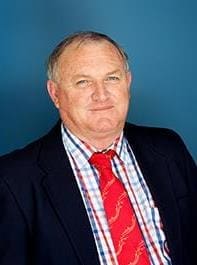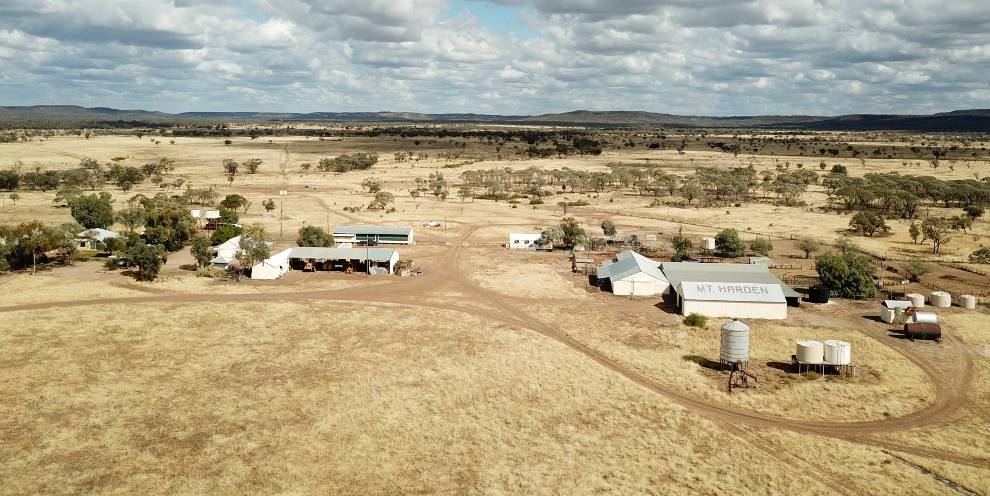
The final section of a cluster fence being erected on Glenaras, near Ilfracombe in central western Qld
IT IS easier to understand the direct production benefits of cluster and exclusion fencing in extensive grazing systems than trying to fence-in the actual property value benefits.
That is the clear message from property agents and other stakeholders, who says the dollar return to property vendors is hard to quantify in a rising market, where increased value could be attributed to the broader market cycle.

Stephen Cameron
Herron Todd White valuer Stephen Cameron said only limited numbers of properties featuring cluster or exclusion fencing had sold in the market so far, making it difficult to speculate about what level of premium (if any) buyers were willing to pay for country with this type of infrastructure.
“Many of the producers making the considerable capital investment in exclusion fencing are doing so with a medium to long-term view, based on the benefits it likely creates to the business operation through increased productivity, as opposed to immediate capital return through increased asset values,” he said.
Mr Cameron said producers were not spending between $7500 and $10,000 per kilometre on exclusion fencing thinking they will make that money immediately in a sale price.
“It is looking at the production benefit rather than the value benefit. A property within a cluster group, if managed correctly, will provide an increase in the productivity through improved weaning rates or increased production by reducing grazing pressure from kangaroos on pastures and or cropping country.”
Mr Cameron said cluster fencing was definitely a benefit when it came to selling a property, because it impacted on business performance.
“Pressures on carrying capacity are compounded during drought. So, if a producer can maintain a core herd, they will fare much better when the season breaks and hopefully lift their carrying capacities further.”
He said cluster fencing was definitely a ‘positive’ when selling a property.
“A buyer not only gets a good boundary fence or is part of a cluster, they also have the productive benefit moving forward.”
Such fencing investments also provided the ability to move back into sheep as an alternative income, where in many suitable areas that previously wasn’t feasible.
“Some graziers in western Queensland within the traditional wool growing country have had the foresight to erect their own exclusion fencing, with the ultimate aim to bring sheep back into the business operation,” he said.
“A property that has improved productivity capabilities, but also has the ability to operate alternatives (such as sheep, goats and cattle) must make a property more attractive to potential buyers. Much of the traditional wool country still has related infrastructure in place, such as shearing sheds and yards that previously would have had minimal value.”
Click here to view an earlier article discussing the productivity impact being seen in exclusion fencing programs, with payback periods as short as one year being reported in some instances.
Creates marketing opportunities
Mr Cameron believes fencing is also creating more market opportunities with sheep producers from NSW looking for country in Queensland.

Morgan Gronold
“That didn’t happen five years ago because of wild dogs. With the new market opportunities comes wider benefits to declining rural communities such as shearing teams, freight carriers, mustering contractors and merchandise representatives.”
Morgan Gronold, the senior regional development manager at RAPAD (Remote Area Planning and Development Board), has also noticed the trend.
“Unusually, producers from traditionally much better sheep country in New South Wales are being lured to western Queensland by exclusion fences. It is usually the other way around,” Mr Gronold said.
He was not sure whether premiums were being paid for properties featuring exclusion fencing, or whether equivalent places without fencing were being discounted, but he said a producer who recently purchased a property admitted he had paid a premium specifically because the fence was there.
Premiums versus discounting
Mr Gronold said properties that aren’t fenced could face discounting.
“A potential buyer faced with two neighbouring places – one that is fenced and one that isn’t – takes the price of the one that isn’t fenced and reduces it by the cost of the fence. That is what they offer the vendor,” he said.
According to HTW’s Stephen Cameron, valuers are looking at the potential percentage or the premiums paid for a cluster fence, rather than the discount.
“Discounting is more likely to arise when a property that sits outside a cluster fence is impacted adversely by kangaroos through harbouring migration.”

Pat Lyons
Emerald-based valuer Pat Lyons from Taylor Byrne LMW said most properties in Queensland were not yet fenced, and therefore were not sold at a discount.
“Having said that, properties that aren’t fenced are certainly less attractive than those that are. Also, they may be sold at a level below fenced properties to achieve a sale.”
Mr Lyons said there had been instances where people looking to purchase a property had taken that into account.
“They consider how much they might have to spend to fence. However, in the last 12 to 18 months, grass has driven the property market and has been a more of a powerful influence than exclusion fencing.”
Premiums difficult to quantify
While properties with fences have sold, Mr Lyons said it was difficult to understand what impact it had had on the value.
“It is certainly a key factor in the marketability of properties. Properties that are fenced are certainly more attractive to potential purchasers. However, there are other factors involved in property transactions that have been fenced.”
In October, coal veteran and rich lister Tony Haggarty paid $13.5 million (WIWO including plant and machinery) for Central Western Queensland’s Mt Harden Aggregation.
At the time of sale, the 34,004ha property, located 72km south west of Blackall, was heavily grassed. Watered by bores and dams, the entire operation was also exclusion fenced.
Mr Lyons said Mount Harden was a strong sale.
“The drought has created a premium in the marketplace for properties that are well-grassed and that makes it difficult to quantify how much of that premium was for the fencing or how much was for the grass.”

Blackall’s 34,000ha Mt Harden aggregation settled for $13.5 million.
Another recent sale was the 7897ha Isisford (western QLD) grazing property Hazelwood which sold privately for $2.4m.
Mr Lyons said the property was fully exclusion fenced and well improved.
“It sold slightly above the market ($25/ha) and I put that mostly down to the exclusion fencing, although the general standard of development was a factor.”
Waiting for a trend to emerge
Mr Lyons estimates the premium for fencing could be around 10 percent, but admitted it was difficult to determine.
“I believe premiums are closely associated with the cost of constructing the fence. So, when we return to more normal seasonal conditions and more properties are fenced, we will see what premium, if any, is in the marketplace. I expect there will be.”
HTW’s Stephen Cameron said the ‘true’ net benefit of the fence will be properly analysed once a good data set of production figures is compared to pre the cluster fence – justifying what everyone is speculating on level of property premiums.
“At the end of a day, valuers have a gut feeling about what premiums a property might make with fencing, but at this early stage, I am not prepared to say what they might be given each property will need to be considered on their individual merits.”
